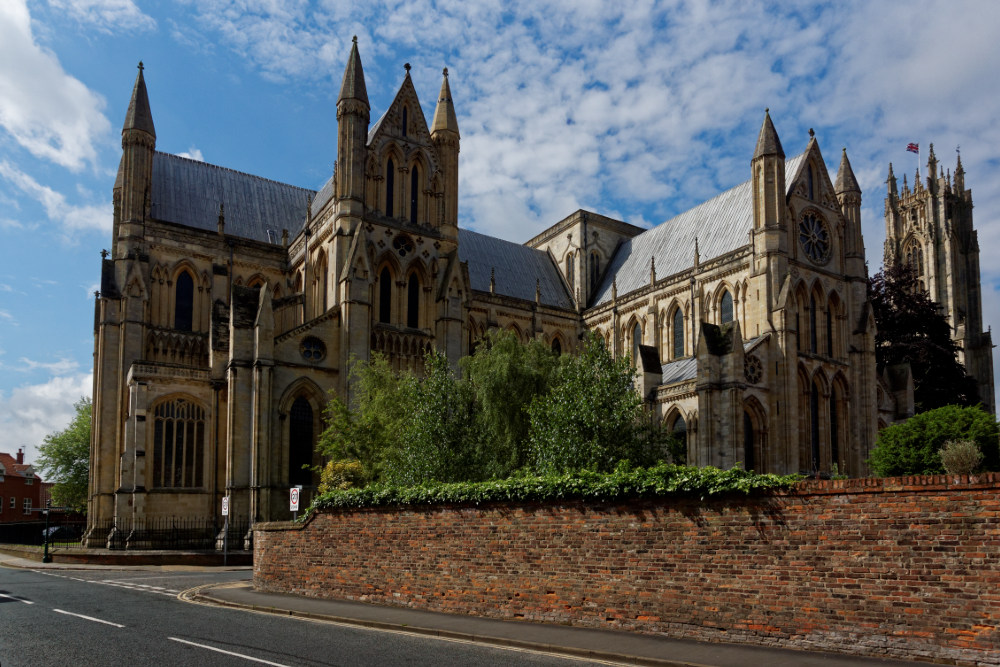
Before leaving Beverley we visited the minster, which unlike York minster has only the status of a parish church despite possessing the architectural grandeur of a cathedral. The minster stood in for Westminster Abbey in the ITV drama Victoria. The first church, with an attached monastery was built at Beverley in the 7th century by St John of Beverley who in 687 AD became the Bishop of Hexham and later the Bishop of York. The youth hostel across the road where we’d stayed the night was originally a friary. John later returned to Beverley where he retired and was buried in his church. Later the Danes almost destroyed the church but it was rebuilt and visited by King Athelstan in the tenth century, some time before a great battle with the Vikings. Pilgrims continued to flock to John’s shrine and in 1037 he was canonized as a saint. In 1138 the saint’s banner was carried with the standards of other famous northern saints at the Battle of the Standard near Northallerton.
Sometime after the Norman conquest the church was refashioned by the Normans but it was destroyed by fire in 1188. Around 1220 rebuilding of a new minster church began and work continued until around 1420 culminating in the magnificent church of today.
We bought bread and I slipped into Costa for a sneaky coffee before we left town in warm sunshine, first along country lanes and then skirting Hull but this time navigation was straightforward. However we met a couple of German cyclists riding route 1 between Luton and Edinburgh who were having great difficulty finding their way through the city.
Soon we were on the trackbed of the former Hull to Withernsea railway line. The 18 mile (29 km) line was opened on 24 June 1854 by the Hull and Holderness Railway to link Hull with the rich agricultural area of South Holderness and to develop the coastal village of Withernsea, population 109, into a seaside resort. The line rventually passed into ownership of the nationalised British Railways and was a casualty of the infamous Beeching Report, the last passenger train running on 19 October 1964. A few years before closure, I was able to ride this line on a day trip with my parents. Withernsea’s population now stands at around 6000 but the local economy declined with the closure of the railway.
The surface was initially asphalt, deteriorating gradually to packed earth then a narrow track, smooth at first but later with some deep potholes so we left the line and continued along the road, which wasn’t busy. The Sustrans map shows route 66 ending where the asphalt section finishes, leaving cyclists to devise their own route to Spurn Head, which isn’t difficult. After a couple of miles of the A1033 we escaped to country lanes at Patrington and up to Holmpton near the North Sea coast. Here we made a slight detour down a side road to an underground bunker but were disappointed to find it’s open only during weekends in June.
We rode past the extensive gas terminal at Easingron and into the village, noting that the “well stocked shop” established in 1877 had closed down. A farm worker overheard our conversation and told us it had closed only last year, due to insufficient custom. Kilnsea was only two miles away where we were greeted at our B&B with tea and cake.
We walked to the Kilnsea wetlands and saw skylarks, avocets and a hare. Yorkshire’s most easterly pub, the Crown and Anchor, was only a ten minute walk away for dinner of vegetable chilli and sticky toffee pudding accompanied by Timothy Taylor’s Landlord ale.